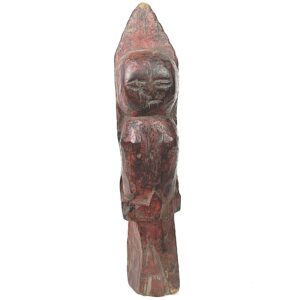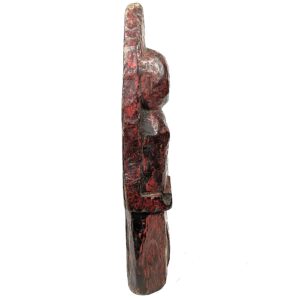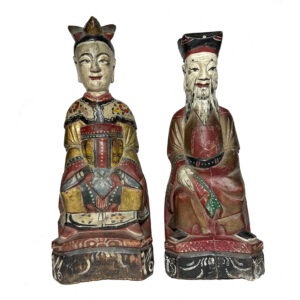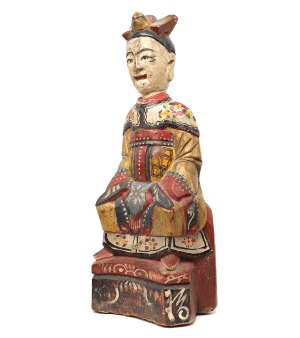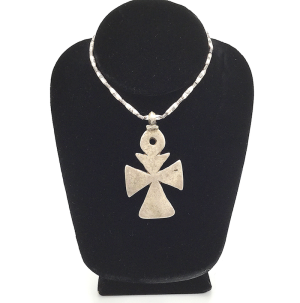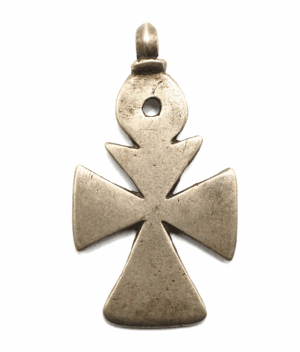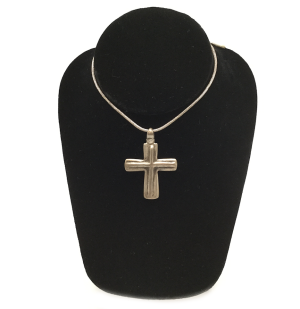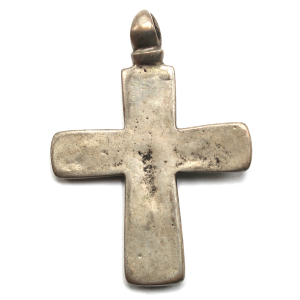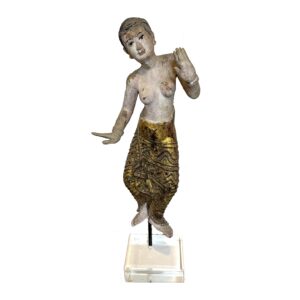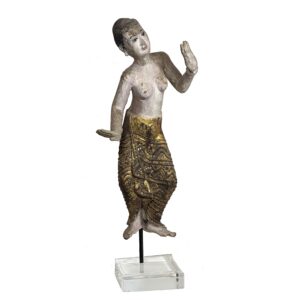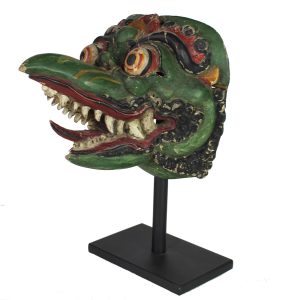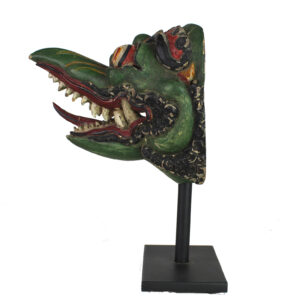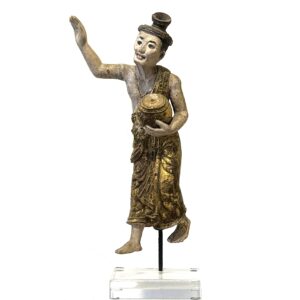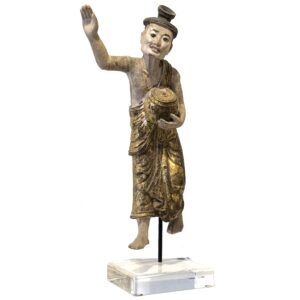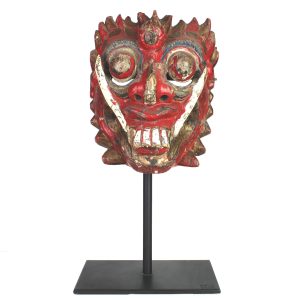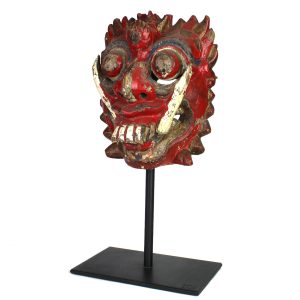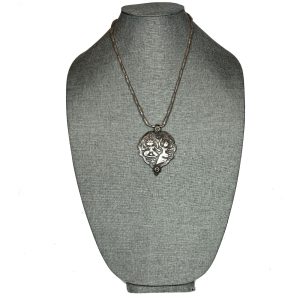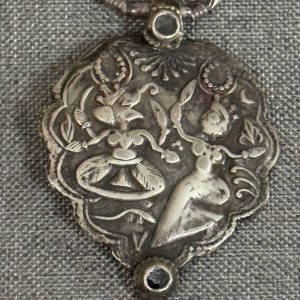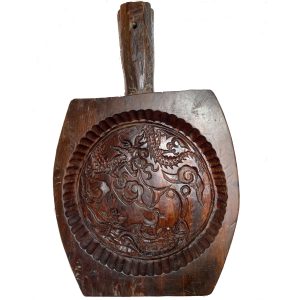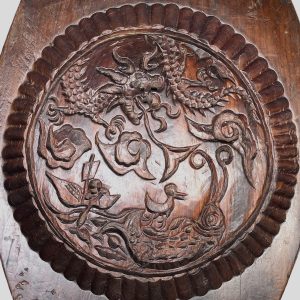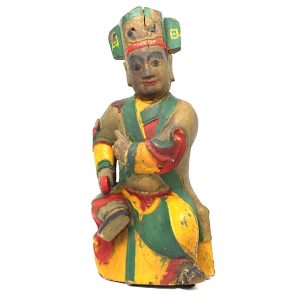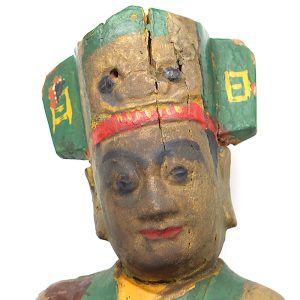Showing 109–120 of 200 results
-
Sale!


$85.00 Original price was: $85.00.$55.00Current price is: $55.00.
Ht: 9..5 ” W: 2″ D:1.5 ” | FREE SHIPPING WITHIN CONTINENTAL U.S.
Antique carving of a Devi (Sanskrit: divine) probably a child’s toy and and protective item. Tikka on forehead, ample breasts – a wish for fertility with a shiny patina from use.
-
Sale!


$785.00 Original price was: $785.00.$625.00Current price is: $625.00.
H: Tudi Gong: 11.75″. Tudi Po 12.37″ | CALL 213-568-3030 OR EMAIL [email protected] FOR SHIPPING.
This happy benevolent couple are Taoist Earth God Tudi Gong and his wife Tudi Po placed on a home altar to assure an abundant harvest. Referred to as “Grandpa” and “Grand Ma” they wear vibrant Mandarin official’s attire, him with a mandarin square with a bird, and her with a phoenix headdress.
-
Sale!


$175.00 Original price was: $175.00.$150.00Current price is: $150.00.
Ht: 3.125″ W: 1.75″ | FREE SHIPPING WITHIN CONTINENTAL U.S.
Large heavy pendant Cross Pattée is topped with a modification of the Egyptian round ankh. Simple elegance. surmounted on softened by smooth surface and
-
Sale!


$175.00 Original price was: $175.00.$150.00Current price is: $150.00.
Ht: 2.125″ W: 1.5″ | FREE SHIPPING WITHIN CONTINENTAL U.S.
Elegant Ethiopian Latin Cross with a raised rounded cross in center. Soft edges and matted surface from wear impart feeling of grace and warmth. Made using lost-wax, it is one-of-a-kind. Chain not included.
-
Sale!


$1,175.00 Original price was: $1,175.00.$975.00Current price is: $975.00.
H: 22″ W: 8.5″ D: 6.5″ | CALL 213-568-3030 OR EMAIL [email protected] FOR SHIPPING.
Decorative and charming wood provincial Burmese female dancer with bare top and gilded Burmese sarong with inset glass and sequins. Set high on a transparent Lucite base, she appears to float in motion.
-
Sale!


$775.00 Original price was: $775.00.$675.00Current price is: $675.00.
H: 13.75″ W: 3″. D: 3.75″ | CALL 213-568-3030 OR EMAIL [email protected] FOR SHIPPING.
Featured in the original Spiderman movie, this rare vintage Balinese mask of Jatayu was used in Ramayana performances. He is the Hindu vehicle of Vishnu, one of the principal Hindu Gods triad. On a museum quality stand.
-
Sale!


$625.00 Original price was: $625.00.$425.00Current price is: $425.00.
H: 8.25″ W: 3.125″ D: 2.25″ | FREE SHIPPING!
This Kitchen God and his Wife is posed as streamlined virtual mirror-images and fashioned with a general quality relying on paint rather than deep carving for details. They sit on backless chairs on a plinth, with simplified gold officials’ robes with long color sashes, and well-carved black and gilt head gear. The wife’s face is smooth, generalized and the male face has a more deeply carved surface and painted highlights.
-
Sale!


$1,175.00 Original price was: $1,175.00.$975.00Current price is: $975.00.
H: 22″ W: 8.5″ D: 6.5″ | CALL 213-568-3030 OR EMAIL [email protected] FOR SHIPPING.
Lyrical wood provincial Burmese male dancer with drum in gilded Burmese sarong with glass and sequins. Set high on a transparent Lucite base, he appears to float in motion.
-
Sale!


$975.00 Original price was: $975.00.$775.00Current price is: $775.00.
H: 8.26″ W: 7.25″ D: 6″ | CALL 213-568-3030 OR EMAIL [email protected] FOR SHIPPING
Dance mask of Rangda, sacred Balinese demon-queen with 2 upper and lower fangs, scary teeth, jagged facial elements, menacing eyes, deep red. Featured in Spiderman 2002 movie on museum quality metal stand.
-
Sale!


$195.00 Original price was: $195.00.$150.00Current price is: $150.00.
Ht: 2.75”. W: 2.5” D: 0.25” 1.3oz. | FREE SHIPPING WITHIN THE CONTINENTAL U.S.
Rare silver pendant of joyful dancing Ganesh with Parvati framed within a betel shape with scalloped edges. Probably crafted and sold at a temple, it was worn for protection rather than good luck.
-
Sale!


$425.00 Original price was: $425.00.$215.00Current price is: $215.00.
H: 16.5″ W: 10.5″ D: 2.25″ CALL 213-568-3030 OR EMAIL [email protected] FOR SHIPPING QUOTE
This finely detailed hardwood mold was used to make sweetmeats confections, perhaps mooncakes for the Chinese Autumn Moon Festival. It is covered with deeply carved propitious symbols for marital harmony, sons and successful endeavors: a four clawed dragon for fertility, two ducks symbolizing marital bliss and harmony, one atop a carp for conjugal bliss and achieving noble rank and a boat with a sail for making all this easy sailing. This would be a great accessory or gift (especially for weddings) to spice up any kitchen.
-
Sale!


$395.00 Original price was: $395.00.$295.00Current price is: $295.00.
H: 13.6 ” W: 7″ D: 5.5″ | FREE SHIPPING WITHIN CONTINENTAL U.S.
Taoist priest or shaman with a double-winged hat with a mythical taotie as a warning against greed and excess. His left hand in the Sword Gesture to cast out evil and right holding a tael symbolizing wealth and good fortune
End of content
End of content

